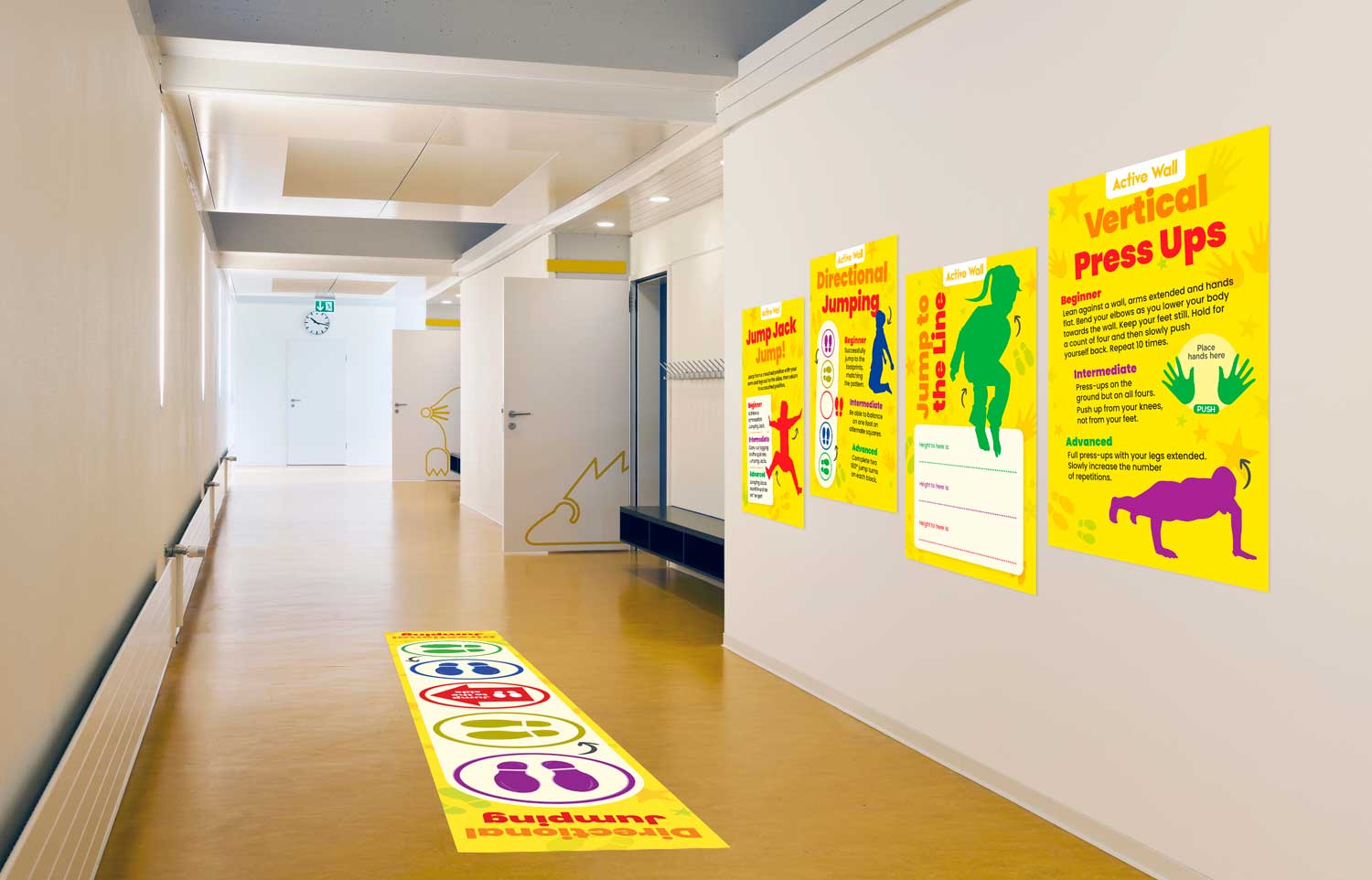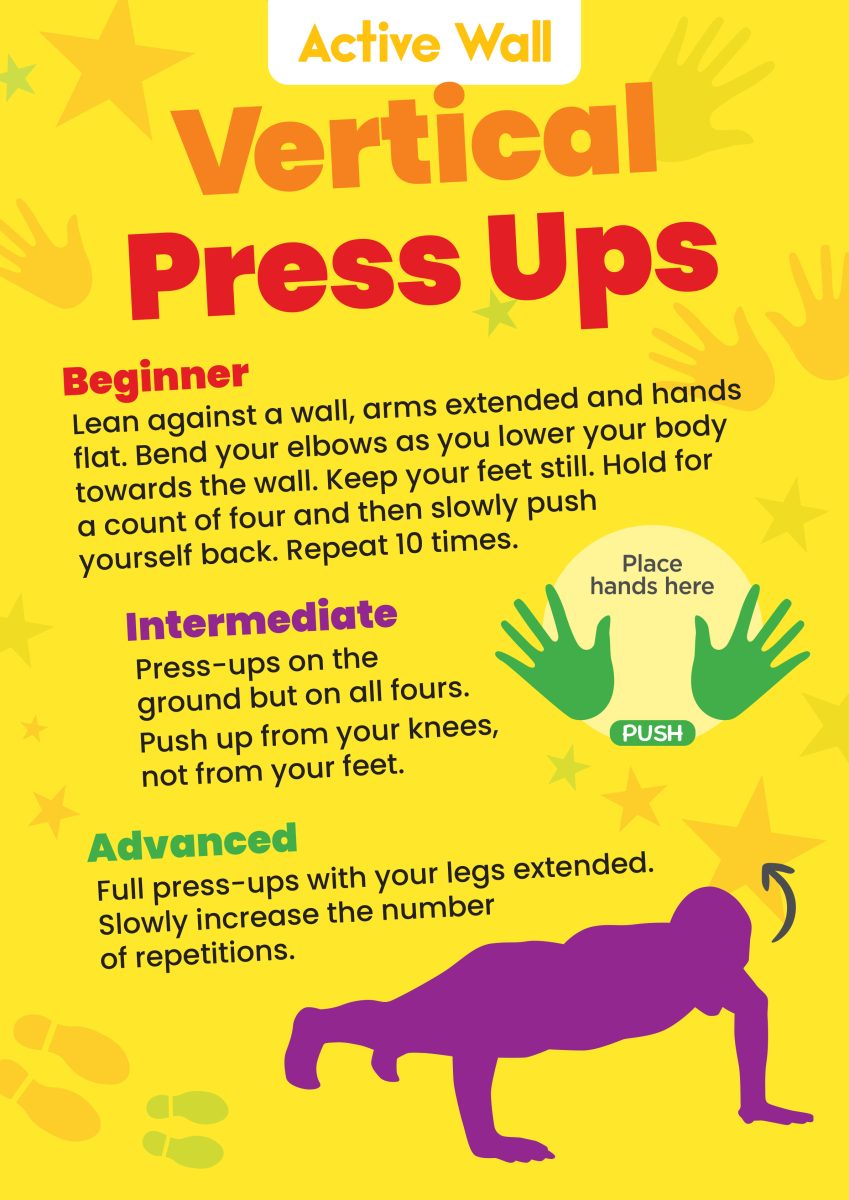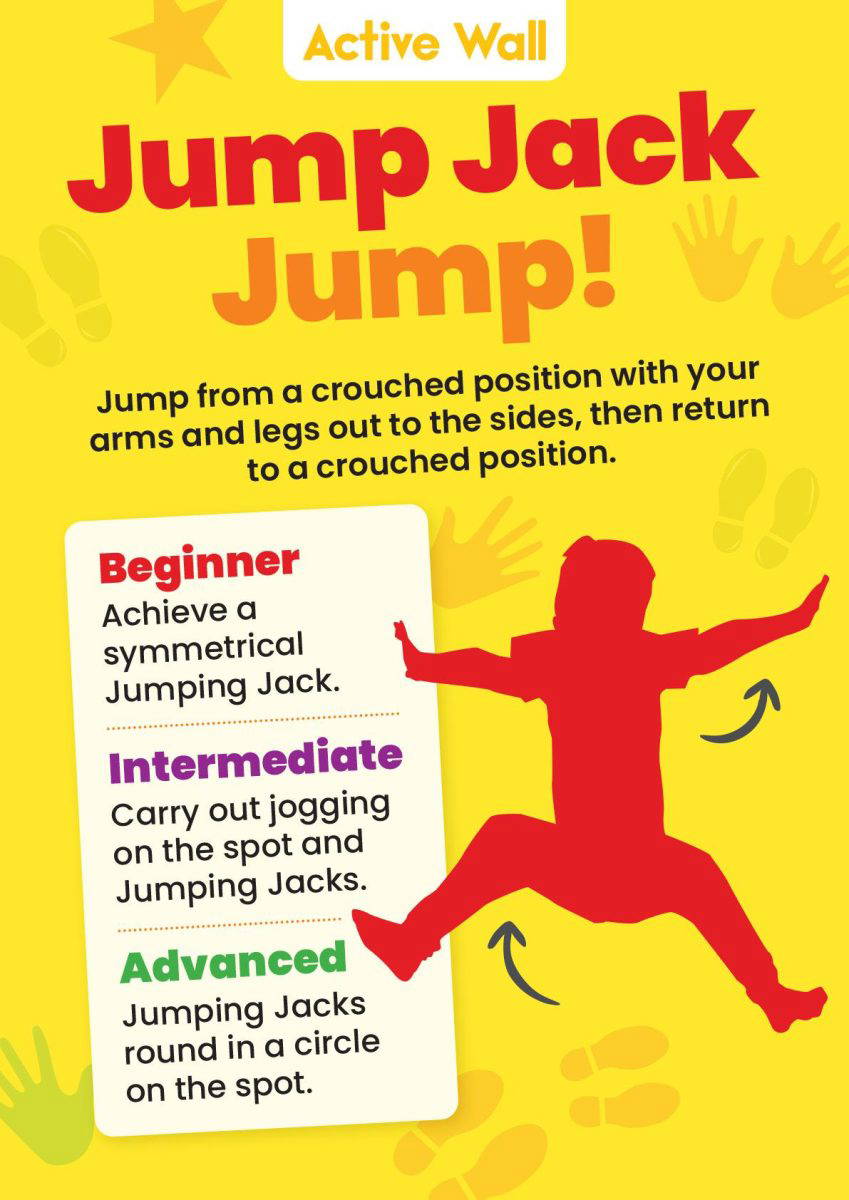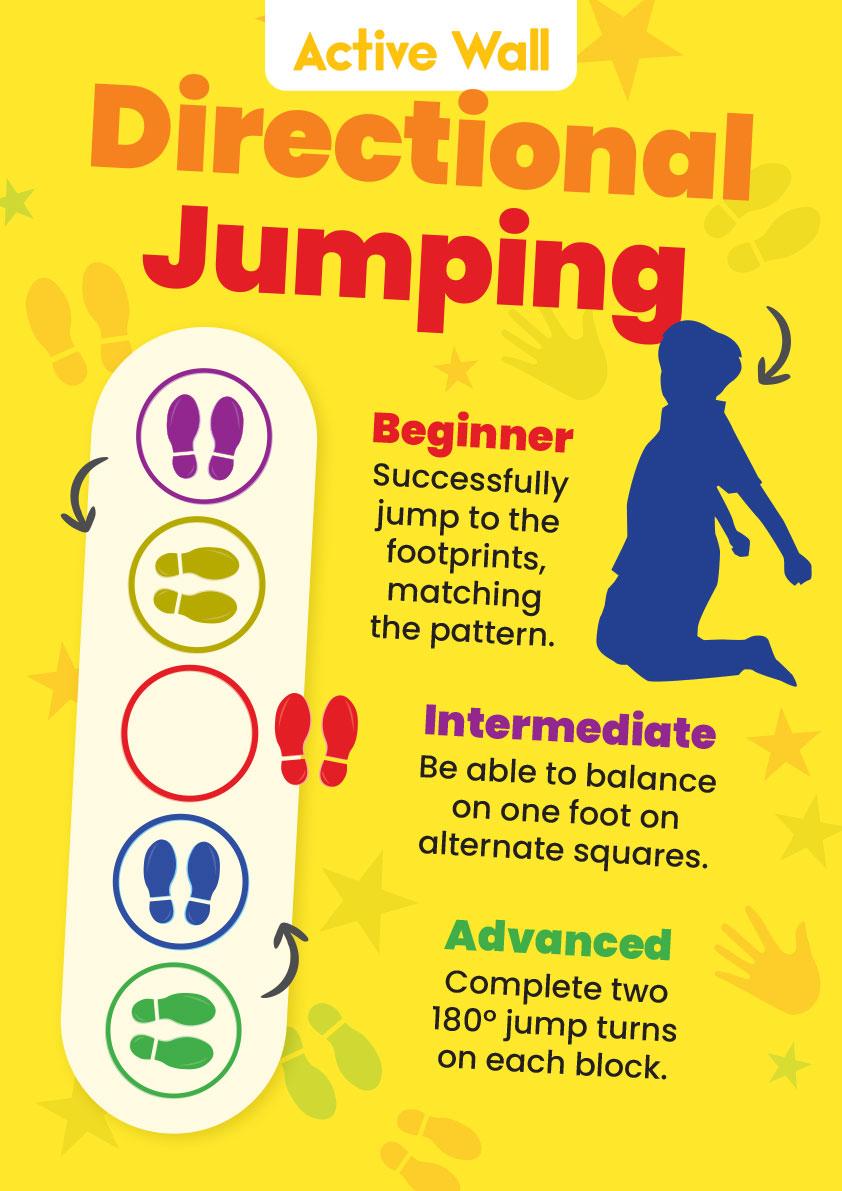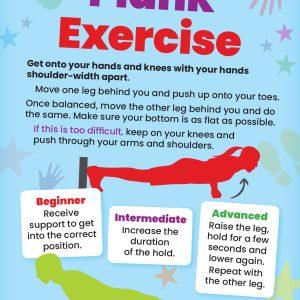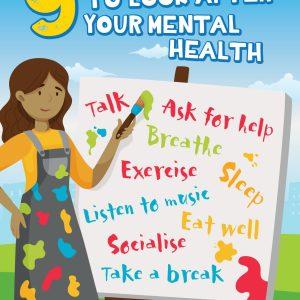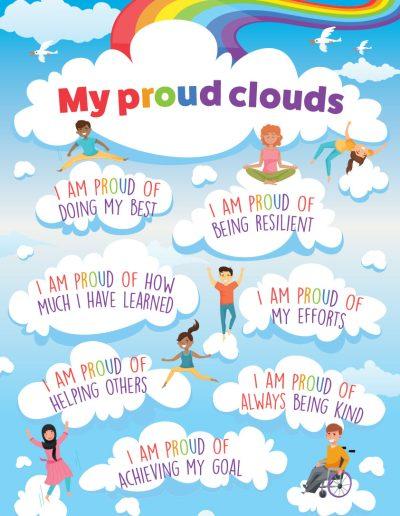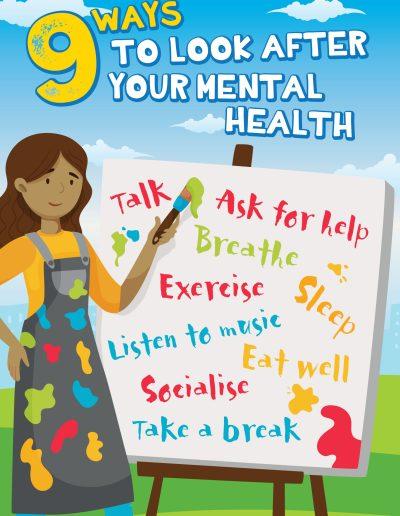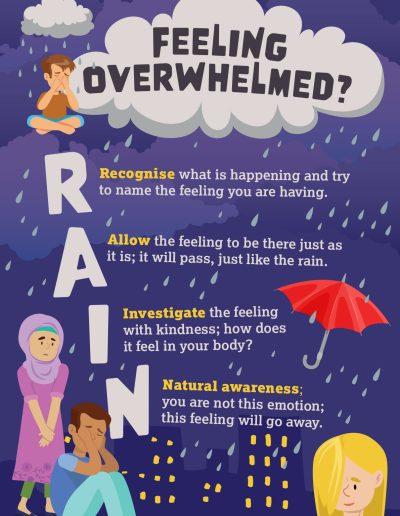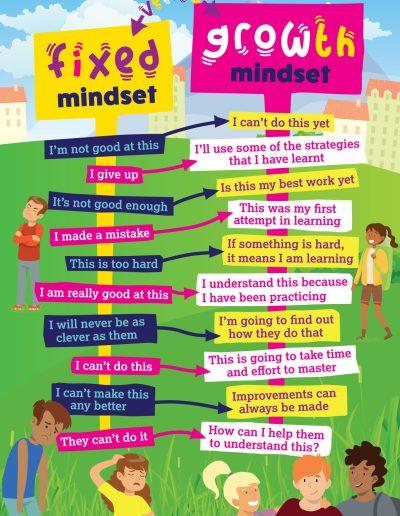These bright and colourful graphics are a fantastic way to introduce short bursts of organised activities to help children alleviate any stress in a calming environment to help relax and reset both mind and body.
Available in 4 sizes with a 2500mm x 440mm floor sticker this piece of wall art can be installed in both indoor and outdoor environments.
Save 10% when purchasing as part of this set of 4 including Directional Jumping, Jump to the Line, Vertical Press Ups, and Jump Jack Jump.
(Shipping not included)
Payment Options
Pay by Credit Card or
Pay by Invoice (within 7 days*)
Beautifully illustrated and vividly coloured to keep your class engaged with the topic. Sensory circuit breaks or activities are a great way to support children's attention and readiness for learning in class. The eye-catching images are a great way to both energise and settle children so they can maintain focus and engage in learning. The Active Wall set includes 4 wall graphics and a 2500mm x 440mm floor sticker that features activities that introduce short bursts of activity to help children break up their day and retain focus.
Not enough room for all 4? No problem, each graphic is also available as individual pieces which you can find here: Jump Jack Jump Directional Jumping Vertical Press Ups Jump to the Line
Additional information
| Weight | N/A |
|---|---|
| Indoor or Outdoor | Indoor, Outdoor |
| Size | A0, A1, A2, A3 |
Children’s Health & Mental Wellbeing
Mental health issues amongst school-age children are increasing
There is growing concern amongst educators about the rising number of school children and young people in the UK who are experiencing mental health issues. Recent studies and reports have highlighted the alarming trend, with experts warning that the pandemic has exacerbated the situation. Statistics show that one in six children have a probable mental health disorder. This level is up from one in nine children in 2017.
Children face numerous challenges, including social isolation, disrupted routines, and increased stress and anxiety, made worse due to the pandemic. Additionally, cyberbullying, academic pressures and family breakdown can contribute to poor mental health in young people. Prioritising school-age children’s mental health and well-being and ensuring they have access to the support and resources they need to thrive is essential for schools and learning organisations across the UK.
What impact does declining mental health have in schools?
Declining levels of mental health among school children are known to significantly impact academic performance, behaviour, and overall well-being in the classroom. Children experiencing mental health issues such as anxiety, depression, and attention deficit disorders may struggle to;
Concentrate on their studies
Participate in class discussions
Complete assignments correctly
This can result in poor academic performance and a lack of engagement with the learning process. Additionally, students with mental health issues may exhibit disruptive classroom behaviour, leading to potential conflicts with their peers and teachers. This can create a negative classroom environment, impacting all students’ mental health and well-being. Addressing mental health issues among school children is crucial for creating a positive and effective learning environment that supports academic success and overall well-being in a school.
What issues can contribute to worsening mental health in children?
Several factors are known to contribute to a decline in school-age children’s mental health. Here are a few examples:
Family issues, academic pressure, social pressures amongst peers, traumatic experiences, biological factors such as hormonal changes and environmental factors such as high-stress learning or living environments.
Statistics show that children with a challenging home environment or long-term illness are most vulnerable to declining mental health. It is important to note that these factors are often interrelated and can compound one another, leading to more severe mental health issues. The covid-19 pandemic also significantly contributed to mental health issues amongst young people through the unpredictability and changes that it brought children, leading to a rise in social, emotional and developmental problems.
How can teaching staff and schools help children’s mental health?
Teachers play a crucial role in supporting school-age children’s mental health. One of the most important ways teachers can help their student’s mental health is by creating a healthy and pleasant learning environment.
The use of positive wall art in schools can have a significant impact on children’s mental health and well-being. Studies have shown that creating a positive and welcoming environment in the classroom can reduce stress, anxiety, and negative behaviours while improving academic performance and engagement. Positive wall art can create a sense of calm and serenity, inspiring children to be more creative, motivated, and engaged in their learning. Positive wall art can also promote community and belong in the classroom. This sense of community can help reduce feelings of isolation and loneliness, known risk factors for mental health issues such as depression and anxiety. Positive wall art can help children feel safe, valued, and inspired.

